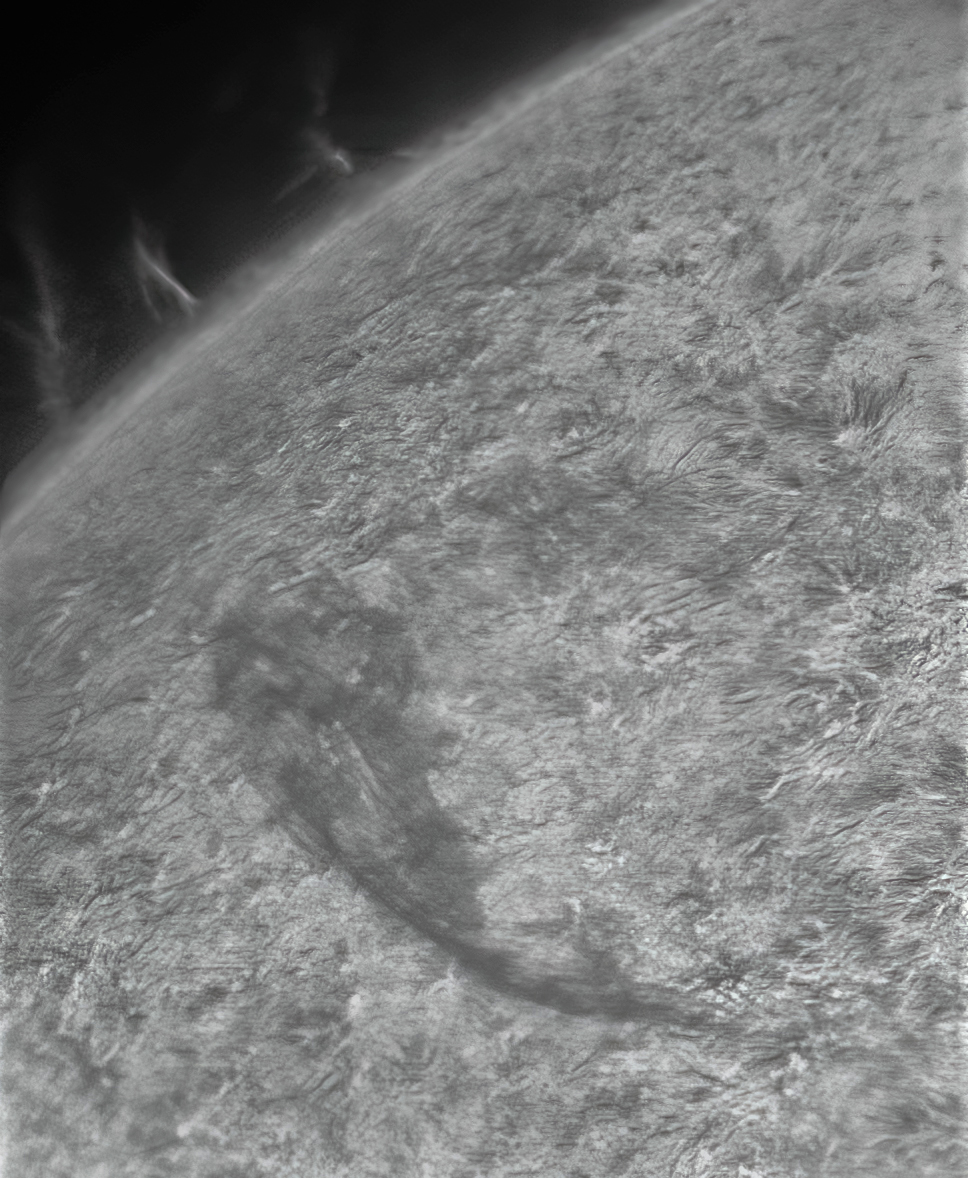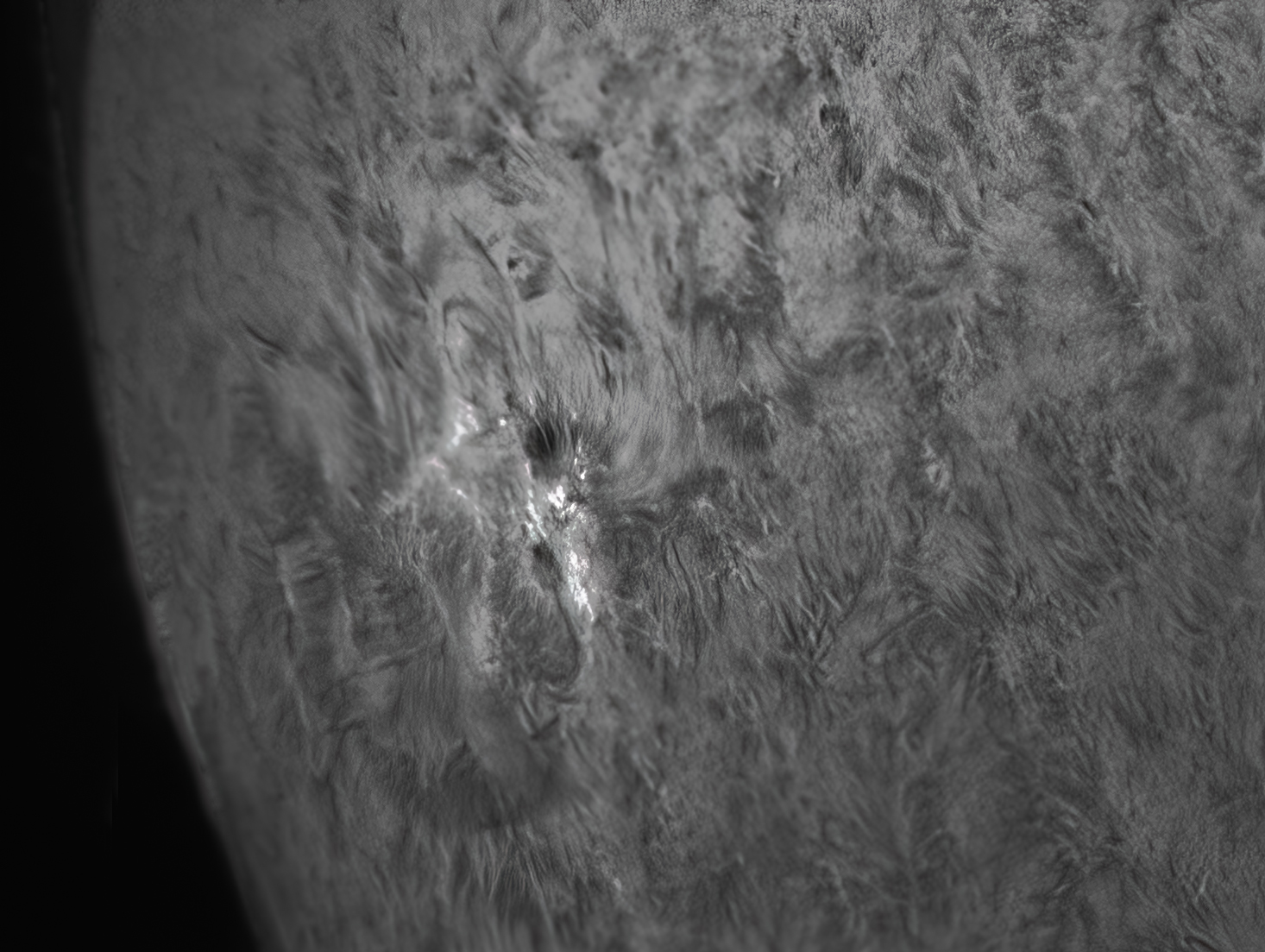More Sun.
08/20/2021. The second set-up of the day, after being clouded out early, was more like it. Here's a four frame mosaic of prominences and a big filament. I've been standing out in the Sun too much lately, so I got these and came home quickly. The more compact sunshield around the camera seems to work well; watch the temperature of the chip, though, because air doesn't have as much room to circulate under there. On an 85F day, the chip got up to 109F and stabilized at 106F. That's about six Fahrenheit degrees above where it settled under the looser shield, and that may contribute a significant amount of noise. Cut away the shield where the Sun does not directly strike it?

4-frame mosaic, each the best 125 of 500 frames
Or, if you prefer one clip aggressively worked over, this is just that from several minutes later:

best 50 of 500 frames
Whence the subtle horizontal banding? Too few frames? I stacked only the best 50 for this photo trying to hold detail.
08/21/2021. Today we have an actual flare-producing sunspot rotating into view. The white stuff is a collar of B-class flares. From my Facebook briefing on this and similar images: flares are classed A, B, C, M, and X, so these aren't much as flares go but they're way more than nothing. Solar flares occur when magnetic fields on the Sun interact. Think of them as sparks on the battery that powers the solar system.

best 125 of 500 frames
B-class flares release, typically, 10^28 ergs. C, M, and X flares are each one order of magnitude stronger than the previous class (so a typical B flare is about 100x weaker than an M flare, etc). There's weak and there's weak: 10e28 ergs is about 250,000 megatons of TNT, so those white sparks represent something like 20,000 Castle Bravo detonations.
08/22/2021.

best 125 of 1,000 (700 microseconds each)